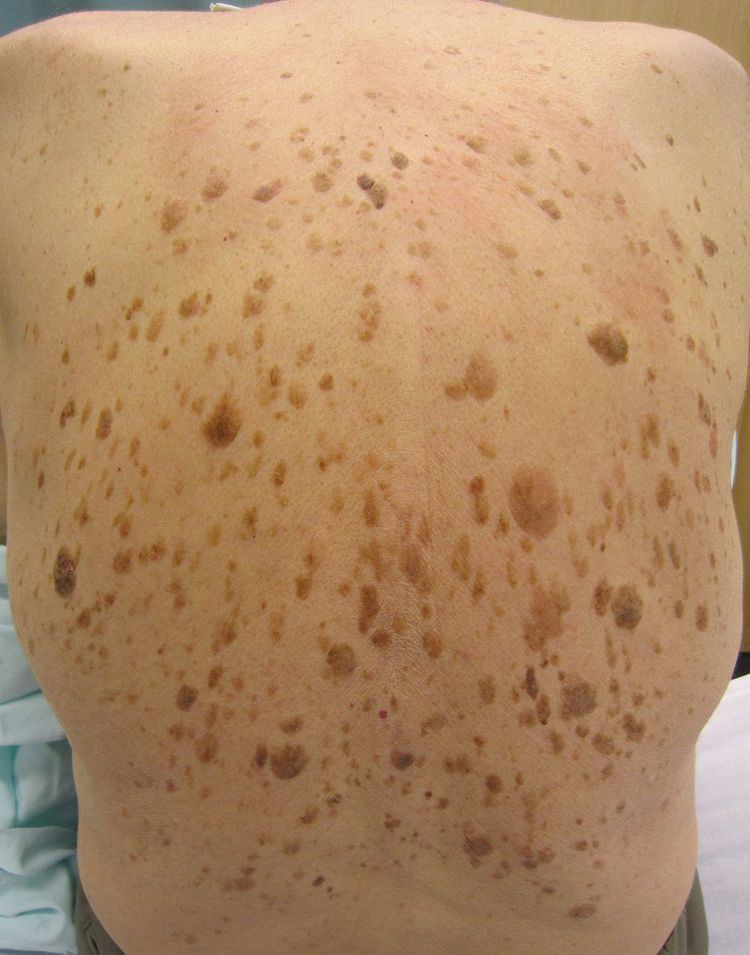 | ||
The Leser-Trélat sign is the explosive onset of multiple seborrheic keratoses (many pigmented skin lesions), often with an inflammatory base. This can be an ominous sign of internal malignancy as part of a paraneoplastic syndrome. In addition to the development of new lesions, preexisting ones frequently increase in size and become symptomatic.
Contents
History
It is named for Edmund Leser and Ulysse Trélat.
It has been suggested that Leser and Trélat were observing angiomas and not seborrheic keratoses, and so the credit should properly go to Hollander for his 1900 publication.
Associations
Although most associated neoplasms are gastrointestinal adenocarcinomas (stomach, liver, colorectal and pancreas), malignancies of the breast, lung, and urinary tract, as well as lymphoid tissue, have been associated with this impressive rash. It is likely that various cytokines and other growth factors produced by the neoplasm are responsible for the abrupt appearance of the seborrheic keratoses.
In some cases, paraneoplastic acanthosis nigricans (35% of patients), florid cutaneous papillomatosis, ichthyosis acquisita (acquired hypertrichosis lanuginosa), Cowden syndrome, tylosis, acrokeratosis paraneoplastica of Bazex and tripe palms accompanies the sign of Leser-Trélat.
